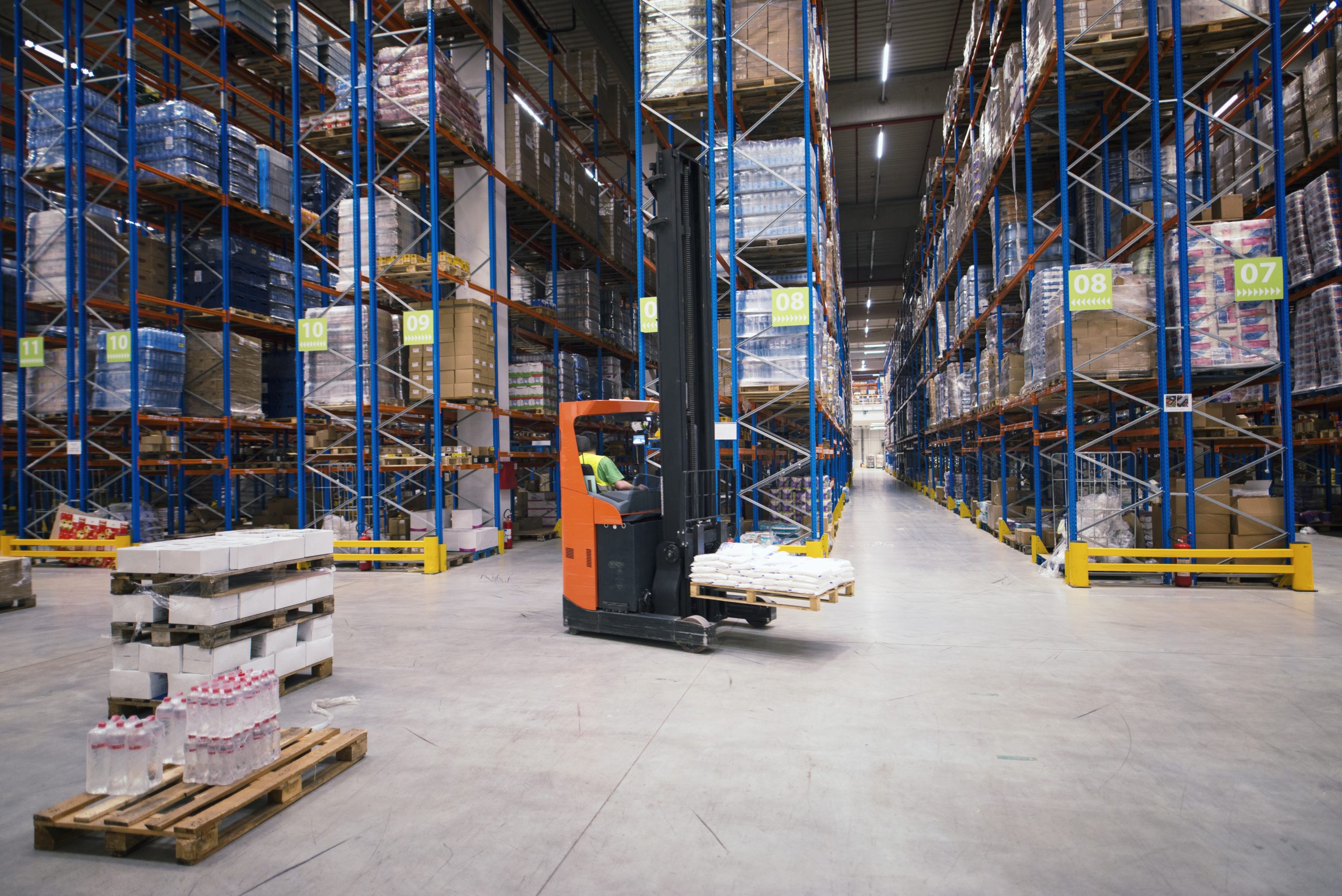Warehouse Management System as a software solution that optimizes storage processes is offered by a large number of companies on the market today. To make the process of choosing a quality WMS easier for you, we have listed the main features that a quality WMS solution should have.
Of course, the quality of the solution and the number of features are not the only important thing when implementing such a solution, but they are definitely a prerequisite for successful operation. The basis of the list of these features is our many years of experience working with a large number of clients from different industries in the region, through which we know what each industry needs to improve its warehousing operations.
To begin with, the necessary features that every WMS must have relate to the basic operations of handling goods, from receiving and entering the goods, transferring the goods, to commissioning, packing and the goods themselves exiting the warehouse. In the following blog, we will explain in detail each of the listed features.
Receiving and entering of goods
Proper entry of goods into the warehouse and their placement in a specific location are the first steps in optimizing storage space. Namely, after certain goods are unloaded from the truck and placed in the entrance area of the warehouse, it is necessary to store them in the “smartest” way possible. The mere receiving of goods in the warehouse is done through manual barcode terminals, together with checking the correctness of incoming documents, in order to completely eliminate errors. In a situation when the goods entering the warehouse do not have a barcode, it must be possible to create them from the WMS system and label them correctly. The goods thus received are placed in a precisely predefined location in the warehouse, automated by the system or defined by the user, depending on the specificity of the process.
Once the items are placed at their locations, the next type of manipulating them is transferring them or picking the goods and preparing them for delivery.
Transferring goods
Often a particular type of goods has to be transferred from one location to another within the same warehouse, or from one warehouse to another. The reasons are various, and this is mainly done due to additional optimization of storage space. In order for these goods not to be “lost”, they need to be transferred property, and any quality WMS should support this possibility.
By scanning the item, transport unit and starting and destination location, and the mere transfer of goods, you always know where the goods are, and in what location they were before transferring. Additional scanning of the destination location guarantees even greater accuracy. This reduces the time required to search for goods in the warehouse, leaving the warehouse worker more time for other tasks. No more lost items or wasted time searching for goods in the warehouse.
Picking of goods
In order for a particular item to be prepared for shipment to the end-user, the warehouse worker must collect it and prepare it for shipment. Quality WMS offers automatic creation of work orders on a daily basis by the system, and assignment to warehouse workers depending on the condition of certain goods and warehouse settings. The logic of collecting goods for delivery, i.e. picking, is set depending on the special requirements and specifics of the warehouse, and the system via manual terminals allows warehouse workers to be guided from the first location where the goods are located, all the way to the last, all with time optimization. From single picking, i.e. commissioning item by item, to collective, i.e. batch picking, we can significantly affect the time a warehouse worker spends collecting goods within the warehouse (approximately 60% of productive hours).
Shipping of goods
The last step before the goods leave the warehouse involves sending the goods to the exit zone, packing, and preparing for shipment. Quality WMS automatically creates all the necessary documents for shipment, and in the case of integration with TMS (Transport Management Sustavom) allows tracking of goods after they leave the warehouse to the end-user. The goal of WMS is to automate processes as much as possible and reduce paperwork to the lowest possible level, so that warehousing is ultimately accelerated.
The above features of WMS refer to the basic processes of handling goods within the warehouse. Of course, these features alone are not enough for a quality WMS. Below, we are presenting features that greatly facilitate the work in the warehouse and the productivity of the warehouse, but also bring companies to a higher level, and we believe that every quality WMS should support them.
Analytics and reporting
For any quality business decision making it is necessary to have relevant analytics and reports that form the basis for decision making. Each quality WMS solution will offer you different reports on the core indicators of your business. Some of the significant reports relate to the state of stock, the flow of goods through the warehouse, employee statistics, a list of vacancies and occupied locations, an overview of the movement of items by LOT number, and a traceability overview…
Also, given the diversity of business processes from your WMS provider, you should also be able to run new custom reports, for the specific needs of your business.
Integration with ERP systems
WMS as a software solution is usually a standalone system. To achieve complete, end-to-end business transparency, WMS integrates with the existing ERP solution that is used. Two-way communication between ERP and WMS allows the order for stacking goods after processing in WMS, ERP returns the exact processed quantities in the warehouse, so the end customer gets a document with the goods with the correct quantities. This way, it is known at all times what quantities of certain goods are in stock and whether it is necessary to order new goods in order to avoid an “out-of-stock” situation.
A quality WMS provider will enable integration with all major ERP systems on the market, and also enable custom integration with ERP that you use.
Workforce management
The total labor cost in a warehouse makes a significant expenditure for the operation of each warehouse. In order to optimize such costs, it is necessary to manage staff well with WMS: from the possibility of automatic or manual assignment of work orders to employees to detailed analytics of the work of each employee. Using “productivity scoreboard”, it is possible to easily show the productivity of each individual worker in the warehouse with the aim of mutual motivation. For each employee, the number of work orders, picked items, and the average picking time can be displayed, sorted from the most to least productive, thus better monitoring productivity.
Serialization and traceability
Traceability as a legal obligation refers to the labeling of a product by batch or LOT item number, in order to be able to monitor the quality of the same product throughout the supply chain. Within WMS traceability is monitored by tracking an item from consumed raw materials to the finished product and the final customer. Traceability is tracked in the system automatically, based on the batch or LOT number of each item for which traceability is required.
This way, a quality WMS allows you to know for each item from which raw material it is made and when it, for example, expires.
Inventory count
Inventory, as a legally defined process that includes an annual inventory count of assets, liabilities and capital, is usually performed once a year. Quality WMS improves the inventory process, shortens it, and makes it easier for warehouse workers. Inventory using hand-held terminals makes it possible to completely eliminate errors when counting stocks, and reduce the possibility of surpluses and shortages to the lowest possible level. Also, in addition to the annual inventory, WMS should provide a daily inventory by location (i.e. cycle count) in order to check the condition of certain locations and goods in the warehouse.
Conclusion
In addition to the above features, we would also like to mention the fact that a partnership between the service provider and the client is very important for the implementation and maintenance of WMS. It is important that possible problems when using the application are resolved quickly, and that the service provider is flexible enough and ready to adapt its application to the client’s specific processes.
The mere fact of the existence of these features without quality support is not enough for the successful operation of WMS, so we recommend choosing a partner that is flexible enough and fast when collaborating after implementation.
In case you’d like to find out more, contact us and we’ll provide you with our consultancy.







